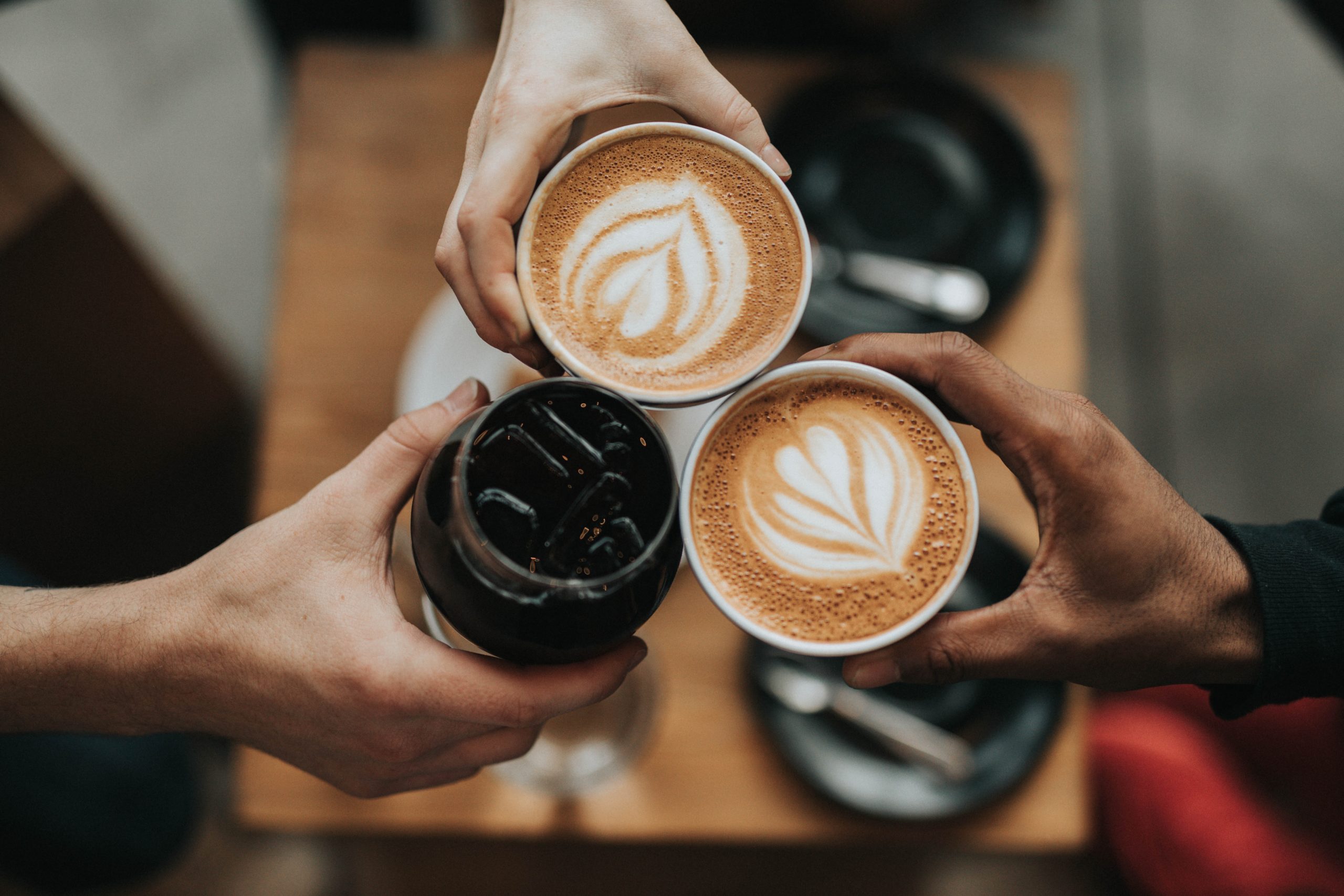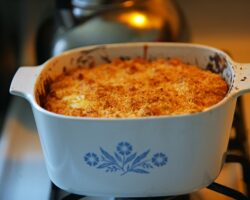How to drink coffee without gaining weight
What are coffee beans made of?
The composition of raw beans collected on coffee plantations includes the alkaloids caffeine and trigonelline, more than thirty organic acids useful for digestion (including chlorogenic, malic, citric, acetic and coffee), protein and mineral salts. This set of substances, the names of which are not necessary to fill your head, makes up about a quarter of the mass of the grain, and the rest is coffee oil, fiber and water.
When roasting grains, the volume of water in their composition first of all decreases – from 11% to 3%. During the roasting process, a complex substance is formed – caffeol, with which a specific coffee aroma is associated, and sucrose in the grains turns into caramel under the action of heat, which provides the drink with a characteristic color. Insoluble polysaccharides partially break down into simple and soluble carbohydrates.
When buying ground coffee, carefully study the composition described on the package – it is better to buy 100% Arabica, although it will cost more. The addition of robusta (poor quality strong coffee) and other obscure ingredients (like ground chestnuts, acorns, all kinds of flavorings, etc.) will reduce the price, but none of the sellers can vouch for the taste of the drink and possible health consequences.
How coffee affects the body and excess weight?
The presence of an alkaloid called caffeine owes coffee it’s exciting, invigorating effect. Heat treatment (roasting and boiling) does not affect the caffeine content, and since the mass of the coffee bean decreases during the roasting process, the percentage of caffeine even increases – that is, the coffee only grows stronger.
Physicians and chemists of the past centuries did not care if coffee could get better, but they managed to find out that in small doses caffeine excites the central nervous system, which improves metabolism, accelerates blood circulation and “increases the vital activity of all body tissues,” according to a German scientist. Justus von Liebig. The acceleration of metabolism is accompanied by a diuretic effect, which is fraught with dehydration if coffee is abused and there is a lack of drinking water.
The main difficulty in determining a reasonable rate of coffee is to monitor how the alkaloid in its composition affects the production of stress hormones: cortisol and adrenaline. Both hormones are produced by the adrenal glands, and caffeine briskly stimulates this process. In short, the task of these hormones is to awaken the body to fight the danger that has arisen (adrenaline) and inform us that the world is about to run out of food (cortisol). Blood sugar levels rise to provide the body with more energy, blood pressure and heart rate rise to give more oxygen to the muscles, which are tensing in preparation for action. Giving your body such a shake-up with unreasonable frequency, you can easily achieve serious consequences: from unbridled appetite/mood swings and weight gain to heart disease and diabetes.
In general, caffeine, in conjunction with the reaction of the nervous system, can lead to both weight loss and weight gain. This is because insulin (the fat-storing hormone) first converts unused glucose from the blood into glycogen and stores it in the muscles—and whatever is left turns into body fat. And therefore, nutritionists and therapists call 300-400 mg safe for a healthy coffee diet – no more than three cups.
In addition, doctors warn: the habit of drinking coffee on an empty stomach is fraught with irritation of the mucous membrane of the stomach and esophagus, the development / exacerbation of gastritis and reflux. It is much more useful to drink a cup of coffee after a meal, since this magical drink does an excellent job as a digestif – it helps digestion. Drinking coffee at night is also not worth it – there is nothing good in insomnia, and stimulating your appetite on the eve of lights out is also useless to you.
What determines the calorie content of coffee?
By itself, black coffee is by no means a nutritious drink. The calorie content of coffee varies slightly depending on the type of beans (some have a little more protein), the type of roast (the stronger, the more fats and monosaccharides are caramelized on the surface), and the method of preparation. However, all of these factors are unable to increase the fat content of coffee above 25 kcal per serving of 200 grams.
A cup of ristretto or espresso barely has 2 calories, a mug of Americano has two to five calories, and coffee from a Turkish or French press can reach up to 12 calories, as it takes longer to cook and more ingredients go into the water.
Knowing how many calories are in a cup of coffee, you can make a fair and prudent conclusion: you can get fat not from coffee, but from other ingredients added to a hot (or cold) drink.
You can drink as much natural coffee without milk and sugar as you like without fear of gaining weight, as long as it does not harm other systems of your body. Black, freshly brewed, unsweetened coffee is a low-calorie and healthy drink, and with the abuse of additives, the risk of gaining unnecessary kilograms increases.
How to drink coffee without gaining weight?
The presence of complex organic substances – tannins – gives the coffee drink a bitter aftertaste, which we generously flavor with milk, cream, ice cream, condensed milk, liqueur, sweets, cookies, buns … Whoever has enough imagination and taste. All these pleasant components contribute to an increase in calorie content and, therefore, lead to weight gain.
In 100 g of skimmed milk – about 33 kcal, in 1.5% – 45, in 2.5% – 55, 3.2% – 62, and in baked milk of the same fat content – 80-90. Cream has even more calories: 100 g of 10% cream has about 120 calories, 20% has about 240, and 35% has over 350. Plant-based alternatives to natural milk are lower in fat, but definitely add calories to your coffee due to the carbohydrate composition.
What can we say about the addition of sugar or syrup to coffee: one teaspoon of granulated sugar in 5 grams contains 25 kcal. More – think for yourself. Syrup and honey are no less insidious, keep in mind. The addition of spices (cardamom, cinnamon, star anise) adds pleasant nuances to the taste and does not increase the calorie content of the drink, but maybe a surprise! – Stimulate appetite.
On the other hand, if you’re on a keto diet, you’re no stranger to armored coffee with a generous helping of butter and cream. Supporters of such a nutrition system get rid of excess weight according to other principles, and fatty (but not sweet!) Coffee supplements are quite appropriate there, from which they do not get fat.
Here is a short list of the most high-calorie ways of making coffee that you can get better:
- Glace – coffee with a ball of ice cream; Google how many calories are in ice cream.
- Raf – coffee with cream and, as a rule, with the addition of syrup.
- Flat white – “under-cappuccino” with a flat cap of foam is prepared on two shots of espresso, which means it doubles the appetite.
- Cappuccino – there is a lot of milk in a cap of foam, which means calories; in oatmeal, almond, pistachio – less.
- Latte, latte macchiato – even more milk; And, by the way, coconut is not inferior in fat content to cow.
- Moccachino, mocha or chocolate latte – a shot of espresso with the addition of milk, chocolate and (sometimes) whipped cream; for information – in one teaspoon of chocolate – 22 kcal.
- Vietnamese coffee – with condensed milk.
- Frappuccino – cold coffee with milk and syrup.
And the main advice: forget about instant coffee, which has nothing to do with the noble drink discussed here. The calorie content of black powder or granules is low, but the fact is that in its pure form, the taste of the resulting hmmm … few people like the liquid, and therefore sugar and milk are added to the mug, and more often they are diluted all this from a 3 in 1 bag, where, in addition to (or rather, instead of) natural ingredients there are chemical additives. You don’t need it, really.






